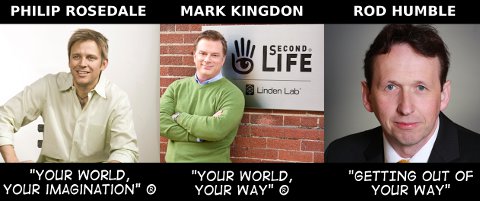 1. Singularity Hub (USA) – Your Car is the Arcade: Driving Simulator Uses Real Vehicle in Virtual Worlds.”Daredevils have an insatiable need for speed, but they play with fire when pushing their vehicle or driving abilities too far. Tag Systems offers a unique solution by transporting the motorist and their physical car to a virtual road, a first in driving simulation technology. Sensors collect real-time performance data on an actual automobile, giving you a first-person perspective in 3D world. Basically, you can accelerate, steer, and brake inside your own car as you would on the open road, but the vehicle is driving in place on steel rollers. This one-of-a-kind VR system allows drivers to approach 150 mph on renowned Formula 1 courses, compete in Fast and Furious-style drag races, or even cruise the surface of the moon.”
1. Singularity Hub (USA) – Your Car is the Arcade: Driving Simulator Uses Real Vehicle in Virtual Worlds.”Daredevils have an insatiable need for speed, but they play with fire when pushing their vehicle or driving abilities too far. Tag Systems offers a unique solution by transporting the motorist and their physical car to a virtual road, a first in driving simulation technology. Sensors collect real-time performance data on an actual automobile, giving you a first-person perspective in 3D world. Basically, you can accelerate, steer, and brake inside your own car as you would on the open road, but the vehicle is driving in place on steel rollers. This one-of-a-kind VR system allows drivers to approach 150 mph on renowned Formula 1 courses, compete in Fast and Furious-style drag races, or even cruise the surface of the moon.”
2. VentureBeat (USA) – DEMO: Next Island opens time travel for its virtual world. “Virtual worlds haven’t fared well as users migrate to social networks. But that hasn’t stopped David Post from launching Next Island. Today at DEMO, the company is formally launching an awareness campaign for its virtual world and enabling the key feature of the world that could be most appealing for users: time travel. Next Island has been in the works for nearly three years. The virtual world opened for its first beta test in December. The world has since grown to nearly 2,000 users and the company is drawing attention to the high quality of its 3D graphics and the sheer creativity of its sci-fi adventure themed world.”
3. The Hollywood Reporter (USA) – Nickelodeon Enters MMO Games Space with ‘Monkey Quest’. “Nickelodeon used GDC 2011 as the coming out party for its first entry into the massively multiplayer online (MMO) gaming space. The company unveiled Monkey Quest, a new family-friendly, free-to-play MMO game based on an original property, at a party held at AT&T Park. The game, which encourages players to work together to solve puzzles and partake in challenges, was also available throughout the week at the Unity booth at Moscone Center. Monkey Quest will go live in April. Nickelodeon has a rich lineup of popular gaming sites, IPs, and virtual worlds. Addicting Games and Shockwave are two of the top gaming destinations online. Addicting Games offers more than 4,369 games and provided over 102 million game plays in December 2010. Shockwave serves more than 1,800 games and provided over 47 million game plays in December 2010.”
4. Mashable (USA) – Inside One Man’s Kickstarter Quest to Build True Artificial Life. “Virtual worlds have long been populated by creatures that interact, reproduce, compete, evolve and die. But by and large, they do so because their behavior is programmed by developers. These efforts can produce complex virtual ecosystems, but they’re not quite the digital reflections of what happens in nature. Life in the real world is “programmed†by DNA, but its form and behavior are determined by the random mutation of genetic code, not by the intentions of a developer. Computer scientists have always been intrigued by the prospect of creating “artificial life†— that is, digital genetic code that can sustain itself over generations and adapt to meet the demands of a virtual environment without human interference.”
5. PC World (USA) – The History of Stereoscopic 3D Gaming. “In 1968, Ivan Sutherland of Harvard University created the first stereoscopic computer display (nicknamed the “Sword of Damocles” for the unwieldy size of the apparatus that hung over the user’s head). Sutherland’s experiments with virtual worlds began in 1966 at MIT’s Lincoln Laboratory, and they culminated in the invention of the first 3D head-mounted display and the first virtual computer environment, a wire-frame simulation of a room (shown here).”
6. Gamasutra (USA) – Bigpoint U.S. Developing Universal Monsters MMO. “Bigpoint Inc., the U.S. based subsidiary of German browser-based games publisher Bigpoint, announced that it is working with Universal Pictures on an MMO based on Universal Monsters. Unlike SEE Virtual Worlds’ upcoming online world also using the Universal Monsters license, this project will be a third-person, multiplayer action RPG in which players fight against famous film monsters from Universal’s catalog like Dracula and The Wolf Man. Bigpoint’s San Francisco studio, which has been working on the project since early February, says it “aspires to capture the integrity of each property and include some of the early film techniques used in bringing the original monster characters to the silver screen.”
7. Detroit Free Press (USA) – Virtual caribou help scientists unearth Lake Huron’s secrets. “On a computer, Bob Reynolds watches caribou run across a wilderness of spruce and lagoons on the edge of Lake Huron. A few of the creatures pause to graze, while the rest move slowly across the tundra. What’s unusual is that the caribou herd is simulated. They are moving at their own whim across a virtual world that mimics an ancient land bridge that existed 10,000 years ago, but now is submerged beneath the waters of Lake Huron.”
8. Silicon India (India) – Indian Gaming Startups Are They Really in the Game? “he Ferrari whooshed across the Lamborghini and there comes the hit point – it’s the Jackpot – Oh yes, it’s the undying NFS, the car racing game. For some the virtual adventure is the perfect idea of gaining nirvana, and even a 10 year old’s combat skills can reign supreme in the game world. Today, gamers constitute 41.2 percent of the total Active Internet users in India, a whopping 89 percent increase from the 2007, as per a report by IAMAI. The growth has been lucrative enough to build up the confidence of the newbies, who have just entered the quasi-penetrated market. Younger people are growing up with the Internet and online games. As they enter the workforce and continue to have greater purchasing power, the market for gaming in India will expand dramatically. “Virtual gaming is definitely big now after 2010. It is about $1 billion market in U.S. and about $8 billion worldwide. It’s huge in Asia Pacific mainly in China, Japan, S. Korea, while India is yet to gain the same speed,†says Sumit Gupta, CEO of BitRhymes.”
9. Wired (USA) – Clive Thompson on How Games Make Work Seem Like Play. “In summer 2009, the UK’s Guardian newspaper had a problem: an enormous pile of receipts. British politicians had been caught filing what would total millions of pounds’ worth of bogus personal expenses. To try to quell the uproar, the government scanned hundreds of thousands of receipts from members of Parliament and dumped the files online—giving reporters the Herculean task of analyzing them. The editors at the Guardian fought back. They turned the task into a game—and invited the public to play. A Guardian programmer named Simon Willison created a clever web app that would present you with a randomly chosen receipt. If it looked dodgy, you could write a quick description of what you’d found, then hit a big Investigate This! button to send the receipt to the paper’s reporters. A leaderboard tracked which contributors had made the most finds. The goal: to get people competing to be top dog, just like on Xbox Live.”
10. Examiner (USA) – Lag strikes Mardi Gras in Second Life. “Going to Mardi Gras in a virtual world instead of New Orleans has some real advantages. No airfare, no hotel bills, no travel time. While it can’t equal being in New Orleans in person, it’s more realistic for most of us. Until lag strikes. If you’ve been in a virtual world any length of time, you know what lag is. It’s like you went to New Orleans and suddenly, instead of a hurricane, the laws of physics went haywire. Gravity increased. Air became thick as molasses, making walking impossible. The speed of light plummeted to barely a crawl. There are huge blotches of the scene around you, walls, floats, costumes, that you simply can’t see. That’s what lag is like, and it struck Mardi Gras in Second Life hard today.”








Recent Comments